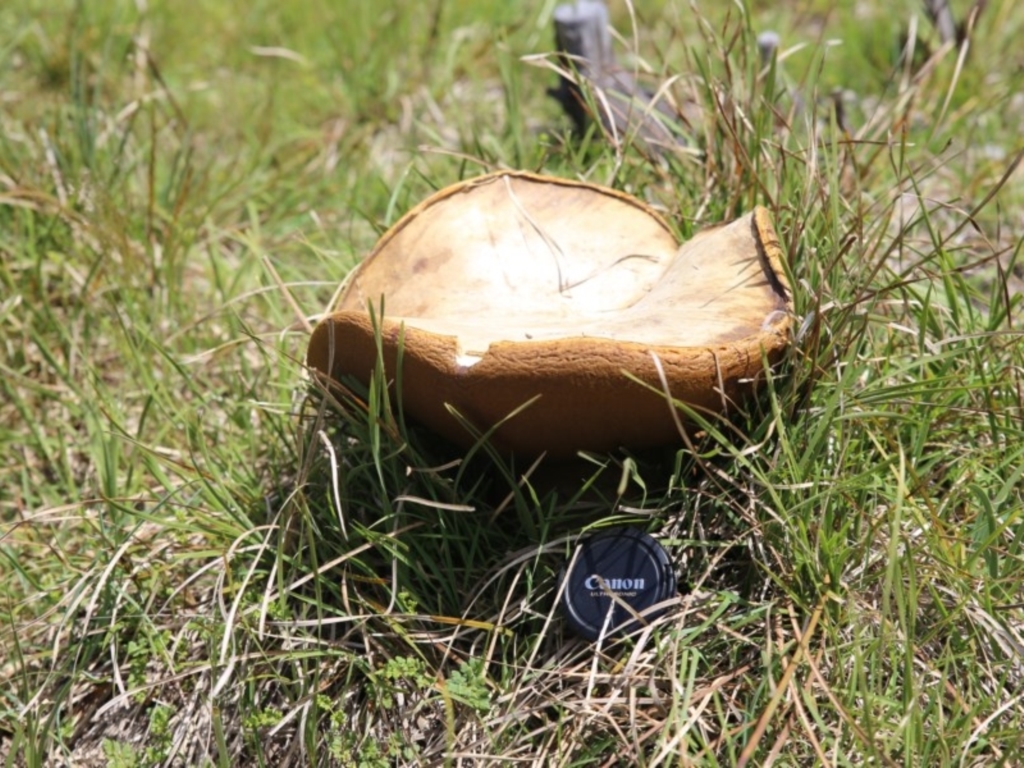Sighting 3362405
Can you identify this sighting?
Identification history
Comments from moderator
See my comments| Insufficient or inconclusive evidence | 21 Nov 2016 | Heino | ||
| Unidentified | 19 Oct 2016 | ibaird |
Identify this sighting
Please Login or Register to identify this sighting.
3 comments
Heino
wrote:
21 Oct 2016
A bolete but featureless and brown (alas, a common colour). If it were say double the size then I'd say Phlebopus marginatus because no other bolete gets so large. Yours may be that species, but it's impossible to be sure from a photo.
ibaird
wrote:
21 Oct 2016
There were no others seen, just this one - and in open ground which has no doubt been cleared for bushfire control purposes, I think I recall seeing similar species in pine forests nearby in Canberra, but that was before 2003! What would you need to see? A section of the fungus to look at spores microscopically?
Heino
wrote:
22 Oct 2016
A combination of macro and micro features. Some examples are: Colours and textures of cap and stem surfaces. A check for any bluing when the bolete is cut (e.g. the flesh of the bolete in this photo http://www.cpbr.gov.au/fungi/images-captions/bolete-bluing-0061.html turns blue on exposure to air). With regard to the pores on the underside of the cap, is the pore surface a different colour to the body of that pore layer. In that linked photo you see two halves of one specimen put in front of the standing specimen. The half on the left is set up so as to show the red colour of the surface of the pored layer. In the half on the right, that pored layer constitutes a very narrow band (only a few millimetres wide) along the lower edge of the cap. That band is not red but yellow. In other boletes you'd find that the surface colour extends through whole pored layer. Knowledge of spore shape, size, colour and whether they are smooth or ornamented is useful and (depending on what the other information has already told you) there may be a few other micro-features to look for. It's worth knowing habitat. You said that you recall seeing similar species in pine forests. Very likely similar but not the same. A number of boletes (not all) are known to form symbiotic associations (called mycorrhizas) with various trees. Those that form mycorrhizas with pines are unlikely to be found in native forests/woodlands (and vice versa). Note that fungi may be able to adapt to new partners. The red and white Amanita muscaria of fairy tales is an introduced mycorrhizal species. In Australia and New Zealand it is now found in native forests distant from any pines, birches, oaks, etc.
Sighting information
- 1 Abundance
- 16 Oct 2016 01:22 PM Recorded on
- ibaird Recorded by





